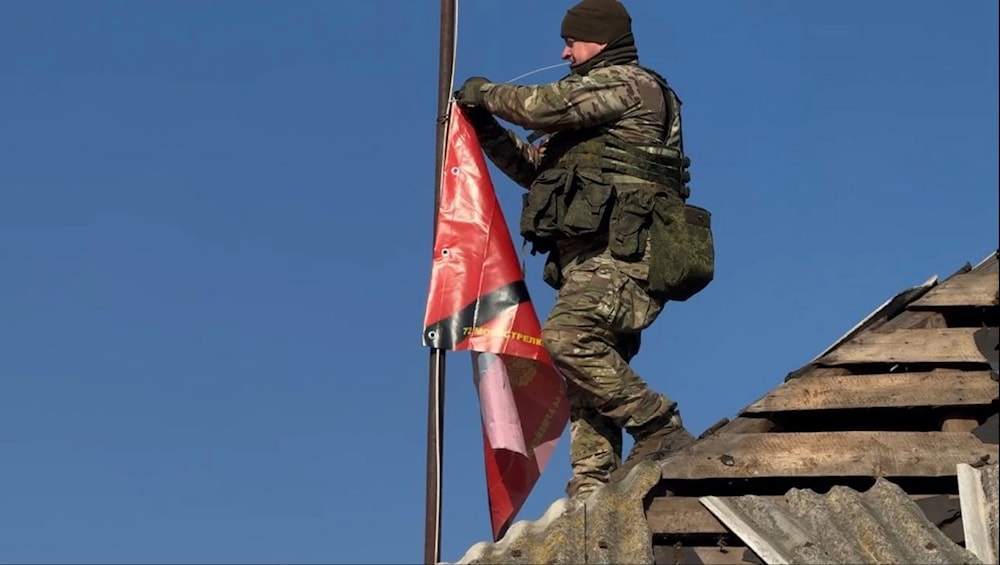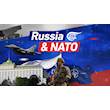Russia’s ‘Operation Flow’ used pipeline to infiltrate Ukrainian lines
According to a battalion commander, a force of approximately 500 Russian fighters navigated through the pipeline toward Sudzha.
-
 In this photo distributed by the Russian Defense Ministry Press Service on Monday, March 17, 2025, a Russian soldier prepares to raise a flag atop a house in Staraya Sorochina, a village in the Sudzha district of the Kursk region of Russia after it was taken over by Russian troops (Russian Defense Ministry Press Service via AP)
In this photo distributed by the Russian Defense Ministry Press Service on Monday, March 17, 2025, a Russian soldier prepares to raise a flag atop a house in Staraya Sorochina, a village in the Sudzha district of the Kursk region of Russia after it was taken over by Russian troops (Russian Defense Ministry Press Service via AP)
Operation Flow, a meticulously planned maneuver that saw Russian fighters infiltrate Ukrainian lines through an abandoned gas pipeline near Sudzha in the Kursk Region, took approximately three months to prepare, according to the battalion commander known by the call sign Morpekh from the Veterans Separate Air Assault Brigade.
“It [the operation] was prepared actually for three months,” Morpekh told TASS on Friday. He emphasized that the mission was designed with multiple exit points: “To understand it, there wasn’t just one exit from the pipe, there were two. The first exit was prepared for the movement of the personnel to the right flank, to Sudzha and the Sumy Region. The second was for the movement to the left flank, to bridges and the industrial zone.”
A force of approximately 500 Russian fighters navigated through the pipeline toward Sudzha, utilizing these two exits to effectively distribute personnel across different positions. Morpekh explained the strategic necessity of this approach: “It is impossible to make so many troops get out of one pipe exit only. If we had tried, we would have sustained heavy casualties because they would have been getting out of the pipe slowly.”
During the operation, members of a combined assault force—including servicemen from the 11th Guards Separate Air Assault Brigade, the 30th Regiment of the 72nd Motor Rifle Division, the Akhmat commando unit, and volunteers from the Veterans and Vostok V Assault Brigades—traveled nearly 15 kilometers inside the pipeline before launching a surprise offensive deep into Ukrainian defenses near Sudzha.
On March 12, Russia’s Chief of the General Staff and First Deputy Defense Minister, Army General Valery Gerasimov, stated that more than 600 fighters had participated in the pipeline operation. He specifically commended the Veterans and Akhmat formations, the 11th Air Assault Brigade, and the 30th Motor Rifle Regiment for their contributions.
Gerasimov praised “heroic actions by the combined assault force,” noting that the operation took Ukrainian forces by surprise, significantly weakening their defenses and facilitating Russian offensive operations in the Kursk Region.
Putin urges Ukraine troops to surrender as fighting in Kursk escalates
Last week, Russian President Vladimir Putin called on Ukrainian forces engaged in battle in Russia's Kursk region to surrender, following an appeal from US President Donald Trump for Putin to "spare" the lives of Ukrainian soldiers.
"We are sympathetic to President Trump's call," Putin stated in a televised address.
"If they lay down their arms and surrender, they will be guaranteed life and dignified treatment," he added, urging Ukraine’s leadership to issue an order for its troops to surrender.
Trump announced on Thursday engaging in what he described as “very good and productive discussions” with Putin, raising hopes for a potential resolution to the ongoing war in Ukraine.
In a post on Truth Social, Trump revealed that thousands of Ukrainian troops were currently encircled by Russian forces and in a “very bad and vulnerable position,” adding that he had personally urged Putin to spare their lives, warning that their fate could result in a "horrible massacre" of a scale unseen since World War II.
"There is a very good chance that this horrible, bloody war can finally come to an end," Trump wrote, emphasizing that he "strongly requested to President Putin that their lives be spared."
At the time, Ukrainian President Volodymyr Zelensky acknowledged that his forces were facing significant pressure from Russian troops in the Kursk region, while also noting that intense battles continued across other frontlines.
Since Kiev launched its cross-border offensive into Kursk last August—the largest incursion by a foreign military into Russia since World War II—Moscow has been steadily pushing back.

 4 Min Read
4 Min Read









